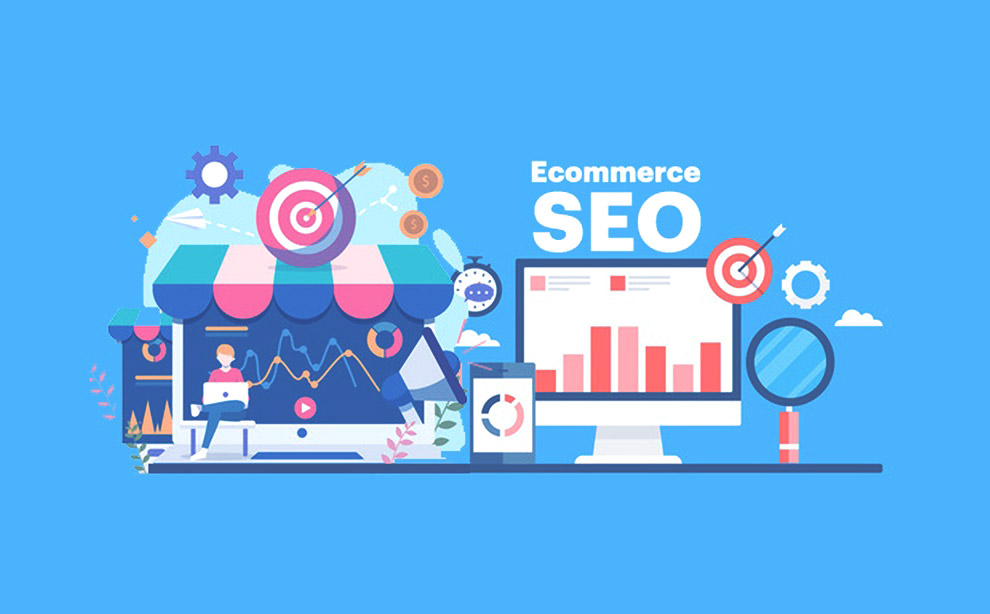Agencies are continually challenged to demonstrate the effectiveness of their strategies and justify their services to clients. Nowhere is this more critical than in the realm of eCommerce SEO. As businesses increasingly invest in online presence, they demand tangible results and a clear return on investment (ROI). We look into eCommerce SEO agencies and explore four key metrics that hold the power to measure ROI and drive it to new heights.
Understanding the Landscape
eCommerce SEO optimises online stores to rank higher in search engine results and attract organic traffic. It involves many strategies, from keyword research and on-page optimization to technical SEO and content marketing. Agencies play a pivotal role in implementing these strategies for their clients, but how do they demonstrate the impact of their efforts? Let’s find out.
1. Organic Traffic Growth
Organic traffic growth is the lifeblood of eCommerce websites. It represents the number of visitors who find the website through unpaid search engine results. For eCommerce SEO agencies, tracking this metric involves more than just monitoring the number of visitors. It’s about understanding the quality of the traffic and how it aligns with the client’s target audience.
- Keyword Ranking: Monitoring the ranking of specific keywords in search engine results pages (SERPs) is crucial. Agencies can track which keywords drive the most organic traffic and identify opportunities to optimize for high-value keywords.
- User Behavior: Understanding how organic visitors interact with the website is essential. Metrics like bounce rate, session duration, and pages per session can reveal whether the traffic is engaged and finds what they want.
- Source of Traffic: Agencies can segment organic traffic based on the source, such as Google, Bing, or Yahoo. This helps assess which search engines drive the most traffic and which may require additional optimization.
- Geographic Insights: eCommerce businesses often have regional or international audiences. Analyzing the geographic location of organic visitors can inform marketing strategies tailored to specific regions.
2. Conversion Rate Optimization (CRO)
CRO is a pivotal metric in eCommerce SEO because it directly impacts the bottom line. It’s not enough to drive traffic; agencies must ensure this traffic converts into sales. To expand on CRO, agencies can implement various strategies and tactics:
- A/B Testing: Running A/B tests on elements like product pages, CTAs, and checkout processes can help identify what resonates best with the target audience. Agencies can experiment with different designs and content to optimize for conversions.
- User Journey Analysis: Understanding the user’s journey from landing on the website to purchasing is crucial. Agencies can use tools like heatmaps and session recordings to identify pain points and areas of improvement in the user experience.
- Mobile Optimization: With the increasing use of mobile devices for online shopping, optimizing the mobile experience is paramount. Agencies can focus on responsive design, fast-loading pages, and mobile-specific CRO techniques.
- Personalization: Tailoring the user experience based on individual preferences and behaviours can significantly boost conversion rates. Agencies can implement personalization strategies, such as product recommendations and dynamic content.
By continuously working on CRO, eCommerce SEO agencies can increase the likelihood of conversions and enhance the overall user experience, leading to more satisfied customers and higher ROI.
3. Return on Investment (ROI)
ROI is the ultimate metric that quantifies the success of eCommerce SEO efforts. It indicates whether the resources invested in SEO generate a positive return. To delve deeper into ROI, agencies should consider the following factors:
- Attribution Modeling: Understanding how different touchpoints contribute to conversions is essential. Agencies can use attribution models like first-click, last-click, or multi-touch to determine the most influential channels and optimize their strategies accordingly.
- Customer Segmentation: Analyzing the ROI based on different customer segments can provide valuable insights. Agencies can assess which customer groups are the most profitable and tailor marketing efforts accordingly.
- Lifetime Value (LTV): LTV is an extension of ROI, focusing on the long-term value of customers. Agencies can calculate the LTV of customers acquired through SEO efforts and compare it to the acquisition cost.
- Cost-Benefit Analysis: Beyond revenue generated, agencies should consider the cost-effectiveness of their SEO campaigns. This involves evaluating the expenses associated with SEO, such as tools, personnel, and content creation.
ROI analysis should be ongoing, allowing agencies to adapt their strategies based on real data and demonstrate to clients that their SEO investments deliver quantifiable returns.
4. Customer Lifetime Value (CLV)
While ROI measures the immediate impact of SEO efforts, CLV takes a more extended view of customer relationships. Expanding on CLV involves looking at various aspects:
- Retention Strategies: Agencies can work with clients to develop and implement customer retention strategies. This may include loyalty programs, personalized communication, and post-purchase engagement.
- Cross-Selling and Upselling: Analyzing the potential for cross-selling and upselling can boost CLV. Agencies can identify opportunities to recommend complementary products or services to existing customers.
- Churn Rate: To understand CLV fully, it’s essential to monitor the churn rate—the percentage of customers who stop doing business with the eCommerce store. Agencies can develop strategies to reduce churn and retain more customers.
- Predictive Analytics: Implementing predictive analytics can help forecast CLV for different customer segments. Agencies can use data-driven insights to prioritize marketing efforts and resources.
By focusing on CLV, eCommerce SEO agencies shift their perspective from short-term gains to long-term value creation. This benefits the client’s bottom line and strengthens the agency’s reputation as a strategic partner in sustainable growth.
Conclusion
E–Commerce SEO agencies, success is defined by measurable results. By focusing on these four key metrics—organic traffic growth, conversion rate optimization, ROI, and customer lifetime value—agencies can not only measure the impact of their work but also provide clients with a clear picture of the value they bring to the table. Ultimately, these metrics empower agencies to meet and exceed their client’s expectations, fostering long-lasting partnerships and driving eCommerce success.
As you navigate the dynamic world of eCommerce SEO, consider partnering with a trusted digital marketing agency like Digital Marketing Agency. Our expertise in SEO and SEM can help you achieve your eCommerce goals and maximize your ROI. Contact us today to explore how we can elevate your online presence and drive results.





